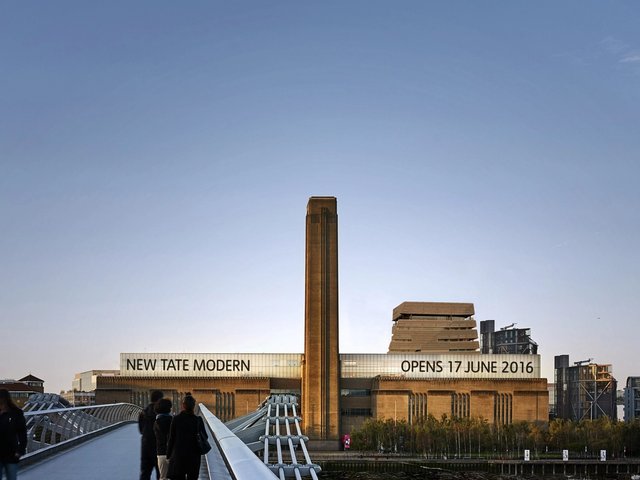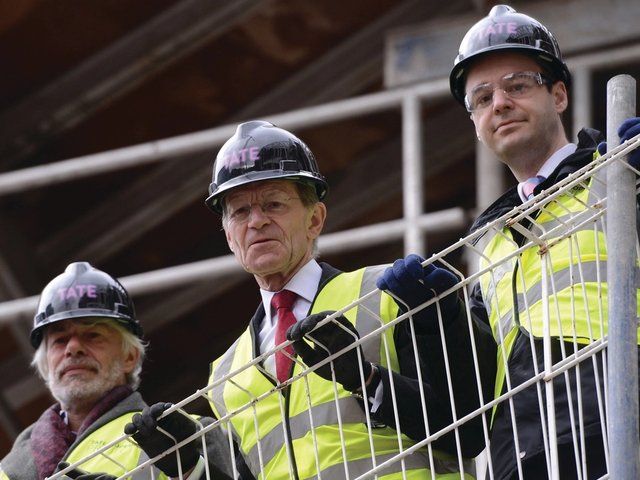Tate Modern is to be expanded, at a cost which could be as much as the £135 million ($254 million) original conversion. Herzog & de Meuron, the Swiss-based architects who converted the former power station in 2000, have been chosen to design the scheme to complete the gallery, in the area south of the Turbine Hall.
The catalyst for the project is EDF Energy’s need to upgrade its electricity substation which is still housed next to the Turbine Hall. Most visitors are unaware of this plant, although the hum from the machinery can be heard. With modern equipment, the substation will only require just under half its present space, allowing the Tate to expand southwards and then into an underground area which contains three huge disused oil-storage tanks.
This will give the gallery at least 50% more space, which it badly needs. Since opening, Tate Modern has had twice as many visitors as anticipated, and numbers are running at over 4 million a year. This makes it the world’s most popular museum of modern art.
Display space will be increased, with the emphasis more on the permanent collection than temporary exhibitions. However, the greater part of the extra area will be for public facilities, such as education and performance spaces. The 350-foot tower of the original Tate Modern is also likely to be opened up with an observation deck.
There will also be improvements to the open space around Tate Modern. A new public walkway is to be inserted across the Turbine Hall, providing a direct pedestrian route from the Millennium Bridge, through the centre of Tate Modern, and southwards into Lambeth. Making the most of the public area around the gallery is particularly important because of a number of new tower blocks which are to be erected around the perimeter.
The Herzog & de Meuron scheme will be presented to Southwark council for planning approval in the summer and it is hoped that permission will be granted at the end of the year. Building work on the gallery extension would start in 2008 for completion in 2011. Although there will inevitably be some disruption to Tate Modern, particularly in the Turbine Hall, the gallery will remain open throughout.
When asked about the cost, Tate director Sir Nicholas Serota said it could be “as much as the original conversion”. A Lottery application is likely to be made, but it is not expected that as much will be received as last time, when £50 million came from the Millennium Commission. The extension will therefore be more dependent on private funding.
Much of the extra display area will be in the former oil-storage tanks. Originally it was thought that the clover-leaf configuration might be retained, but it now seems more likely that the three tanks will be dismantled and then configured into more conventionally shaped galleries.
This was the area which collector Charles Saatchi had his eye on when he approached Sir Nicholas last year, asking whether the Tate might be interested in showing his collection of Britart (The Art Newspaper, December 2004, no. 153, pp. 1,4). Mr Saatchi says he had intended to make a gift, whereas Sir Nicholas interpreted the offer as a loan.
A Tate spokesman told us that Sir Nicholas had responded by pointing out that the oil-storage tanks could not be used “without major expenditure”, although Mr Saatchi said that he understood the Tate “already had other commitments for the extension.” Exactly what occurred during the brief conversation between Mr Saatchi and Sir Nicholas remains unclear, but nothing materialised.
Meanwhile, a planned redisplay of Tate Modern’s collection in the existing building has been delayed for a year, partly on financial grounds. The rehang, which will be masterminded by Tate Modern director Vicente Todoli, is now expected to take place in spring 2006. The present division into four thematic areas is expected to go, but Mr Todoli has not yet revealed whether he will be returning to a chronological hang.



